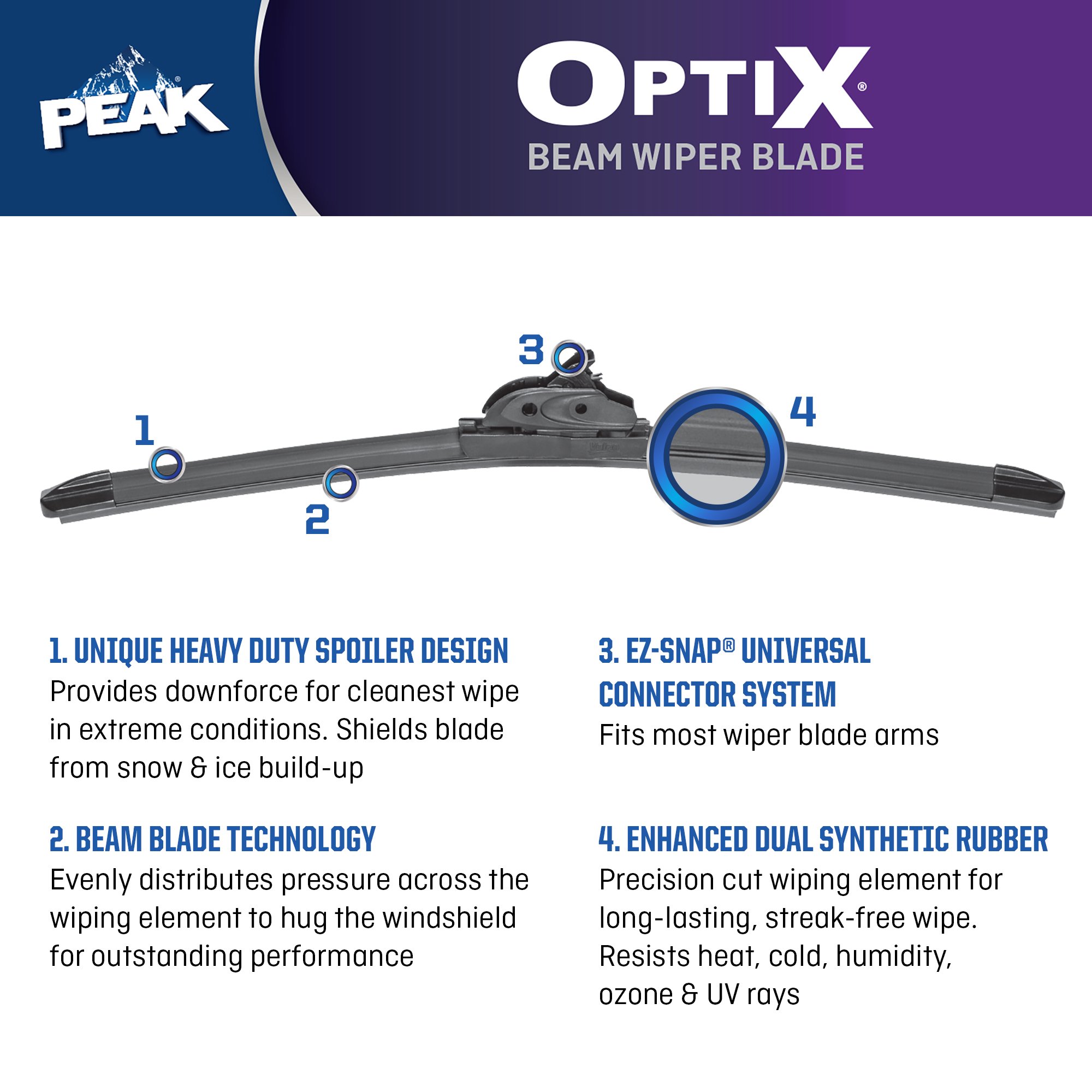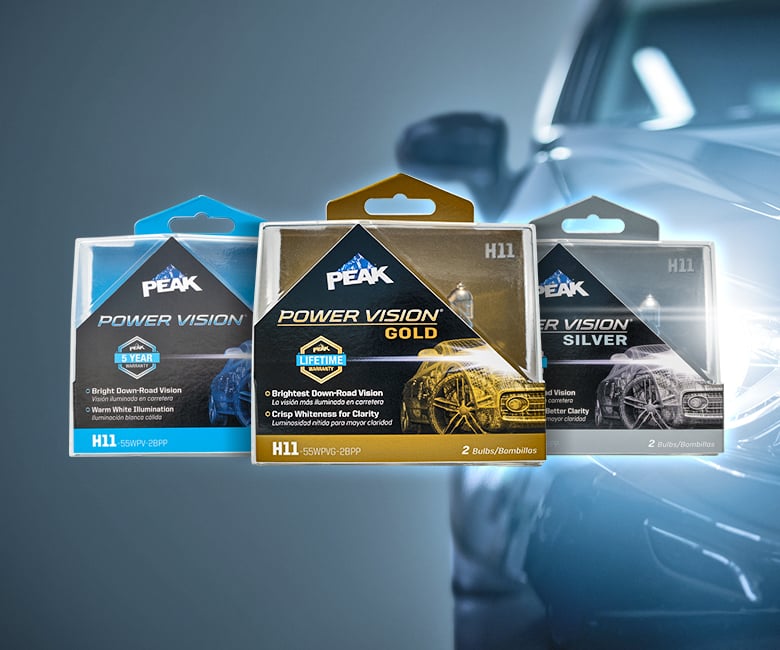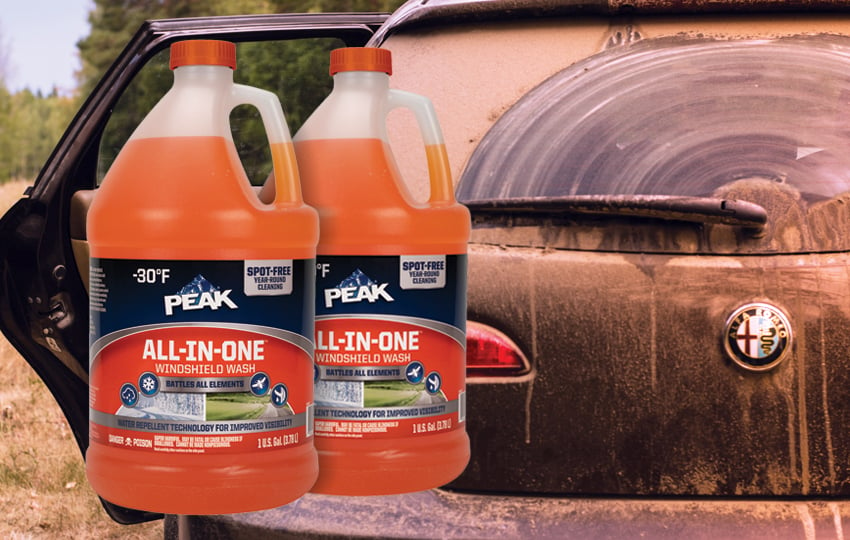
How To Improve Car Safety and Visibility with Wiper Blades
- Vehicle Maintenance
- PEAK
- November 15, 2022
Learn how to maintain these crucial components, when and how to replace them, and what features to look for.
Last year was not a good one for traffic accidents. The National Highway Traffic Safety Administration estimates that 42,915 people died in motor vehicle traffic crashes last year. That’s a 10.5% increase from 2020, when fatalities hit 38,824, and the highest number of traffic deaths since 2005.
“You’re three times more likely to have an accident at night than in daytime.” -Car and Driver
Things get even more grim when talking about night driving. While we only drive at night a fourth of the time, the National Safety Council (NSC) warns that 50% of traffic deaths happen at night. And compromised vision is a huge reason why. According to the NSC, “Depth perception, color recognition and peripheral vision can be compromised in the dark, and the glare of headlights from an oncoming vehicle can temporarily blind a driver.”
Even at their best, traditional headlights with the high beams on can only provide about 500 feet of visibility (half that with normal beams). That means you’ve got less time to react when something crosses your path at night. And as the days get shorter and darker, you’ll find yourself driving in the dark more often. Add rain into the equation, and well, you get the picture.
Obviously, drivers can’t always avoid hitting the road at night, or in the rain. But there is something you can do to stay safe on the roads, day or night, rain, or shine. When maintained properly, and chosen wisely, three often overlooked components can help you stay safe on the road: headlights, wiper blades, and windshield wash.
Learn how to improve visibility, reliability, and safety with performance you can see.
Wiper Blades
You’ve got new high-performance headlights, but what if it rains? The truth is, the majority of weather-related crashes are attributed to rain. According to the U.S. Department of Transportation, 75% of weather-related crashes happen on wet pavement and 47% occur when it’s raining. An alarming 5,700 people are killed, and 544,700 are injured, in crashes on wet pavement every year.
Like headlights, Wiper Blades are frequently neglected. Far too often, drivers only consider their wipers when a blade that’s well past its prime cracks, deteriorates, starts to miss a spot, or leaves messy smears. Needless to say, these little powerhouses are a lot more important than you may think. Forget about the annoyance of a streaky windshield — your Wiper Blades provide peace of mind so that you arrive safely in rainy/wet weather.
Windshield Wiper Maintenance and Best Practices
There are several steps that you can take to maximize the effectiveness of your Wiper Blades and extend their life.
- Clean Your Windshield Regularly: Wipers have to work extra hard if they’re powering through dust, dirt and grime, which can significantly reduce the wipers’ life and effectiveness. In addition to using an all-in-one windshield wash, make it a habit to reach for that squeegee and clean your windshield every time you gas up.
- Clean Your Wiper Blades: Use a soft rag to carefully wipe down your blades with windshield wash or hot soapy water. Give the blades a quick wipe with rubbing alcohol to remove any soapy residue. If you need to remove grease, tar or sap from your wiper blades use a degreaser like WD-40 and gently wipe down the blades until all the residue is removed.
- Don’t Wipe a Dry Windshield: It can be tempting to crank your wipers to remove a layer of dust or pollen but resist the urge to bypass the washer fluid step. Running your wipers on a dry windshield can cause them to wear out more quickly and potentially damage your wiper motor.
- Always Defrost Your Windshield: If it’s freezing outside, don’t even think about running your wipers before you defrost and scrape your windshield. Wipers tend to stick in snow or ice and can easily snap if you turn them on before you defrost. Which leads us to:
- Flip Your Wipers Out Before a Freeze: Is it likely to freeze or snow at night? Do yourself a favor and flip the wipers up so they’re not touching the glass when you park for the night. This will prevent them from freezing to your windshield and potentially breaking.
When Should You Replace Your Wiper Blades?
Extreme hot or cold weather can wreak havoc on your wiper blades. The sun’s rays will dry out the rubber, which can cause it to split or crack, while ice and snow can tear or otherwise damage the blades. It’s a good idea to inspect your blades a few times a year. Regardless, you’ll want to replace your windshield wiper blades every year, at a minimum, if not every six months. In extremely cold climates, you may need to replace them as much as twice a year.
What To Look for in Wiper Blades
Like headlights and other car components, all Wiper Blades are not created equal. It’s important to do your homework and choose high-performing wipers that will maximize your visibility during rainfall and keep you safe on the road. Look for durable, long-lasting wipers that are made with high quality materials. It’s also important to select wipers that will perform well in extreme weather, are quiet when in operation and are easy to install.
How To Replace Your Wiper Blades
Good news: Replacing your Wiper Blades is a relatively easy process that doesn’t require any tools. And while the design of Wiper Blades may vary slightly from vehicle to vehicle, most cars are equipped with wiper blades with a Hook arm. Follow the instructions that come with your new wipers, which generally follow the same process:
- Find out what length of blade you need; check your owner’s manual or search online.
- Position the wiper blade parallel to the wiper arm.
- Pull the blade into the wiper arm hook.
- Continue to pull past the front adapter tabs until you hear the adapter lock into place. After installation, tug firmly on the blade to ensure it is securely attached.
Your wipers should come with adaptors for other types of wiper arms, such as the popular Side Lock, Pinch Tab, and Push Button styles. See exactly how it’s done for any type of connection in this brief YouTube tutorial.
Stay Safe With PEAK® OPTIX® WIPER BLADES
PEAK OPTIX WIPER BLADES are designed to keep you safe on the road in any weather condition, year round. Advanced materials and engineering combine to provide the cleanest, streak-free wipe in extreme conditions. Several features contribute to the blades’ superior performance:
Advanced Engineering
The precision-cut wiping element produces a long-lasting, streak-free wipe with technology that evenly distributes pressure. Blades are designed to hug the curve of your windshield for outstanding performance in all conditions.
All-Weather Technology
The unique heavy duty spoiler design provides downforce for a clean wipe in harsh conditions and shields the blade from snow and ice build-up. Enhanced dual synthetic rubber also resists heat, cold, humidity, ozone and UV rays.
Simple Installation
The EZ-SNAP® Universal Connector System fits the majority of wiper blade arms and makes installation quick and easy.


The durable materials and advanced engineering combine to give PEAK® OPTIX® beam wiper blades exceptional performance and twice the durability of standard blades. They are available in lengths of 15” to 28”.
learn more about how to improve car safety and visibility
-

How To Improve Car Safety and Visibility with Headlights
Learn how to maintain these crucial components, when and how to replace them, and what features to look for.
Learn More
-

How To Improve Car Safety and Visibility with Windshield Wash
Learn how to maintain these crucial components, when and how to replace them, and what features to look for.
Learn More

